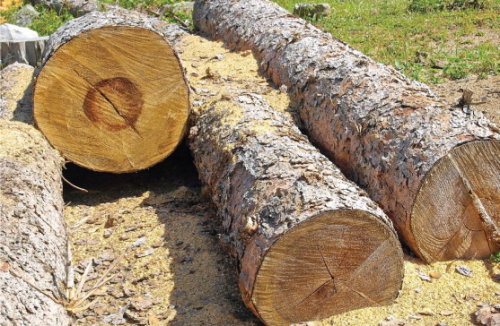
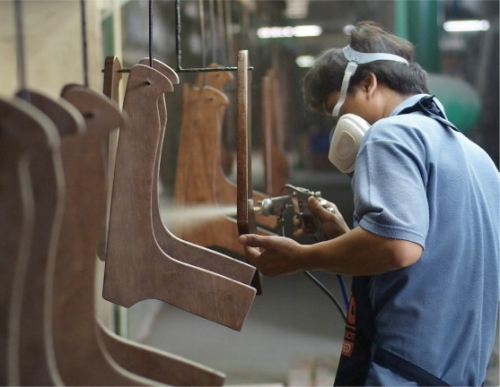
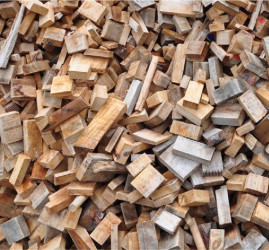
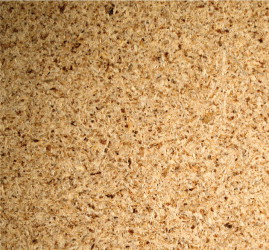
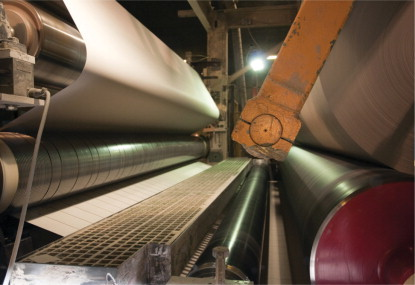
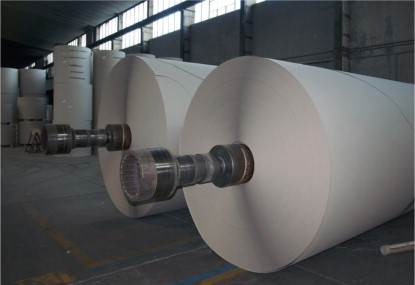
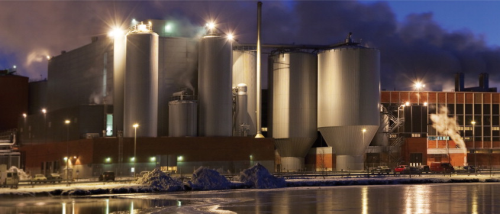
By all accounts, we should now be living in the days of the paper-free office. True, we probably write fewer personal letters, preferring to use e-mail – but then we copy the e-mail onto paper, as well as printing off interesting information from the Internet. Certainly newspaper publishers are having harder times, but losses of some end-uses for paper are being more that made up for in the developing markets of the world, and especially China, by a combination of increased levels of education and rising populations.
Forest products industries
Although paper was not made from wood fibre at all until well into the nineteenth century, the manufacture of paper is now classed as one of the forest products industries, dependent on harvested trees for its raw materials. The full range of these industries covers:
• the processing of felled timber, including its weathering and preservation;
• the manufacture of products from whole wood, including furniture;
• the production of wood chips and the manufacture of wood particle boards and fibreboards;
• the manufacture of wood pulp, paper and paperboard; and
• the manufacture of articles from paper and paperboard.
Apart from the utility filters, on such services as hydraulic oil cleaning or boiler feed water treatment, the first two of the these applications have no call for separation equipment. The third one does have process separation involvement in the form of the machines required for the dry screening of the chipped wood granules, sending oversized particles back to the cutters, and diverting the undersize to fuel usage. Furnace and dryer exhausts also need cleaning to reduce the atmospheric pollution load.
By contrast, the processing of wood into pulp, and the conversion of that pulp into paper, use vast quantities of water: the pulp and paper industry is the largest industrial consumer of water, and uses more water per tonne of product than any other industry. Filtration and other separation equipment have for some time been helping papermakers to reduce their environmental impact, but a major effort at improving efficiencies is still necessary to achieve some measure of sustainability in the industry.
The pulp and paper industry
The global production of paper and paperboard is close to 400 million tonnes. Nearly 40% of this comes from Asia, 30% from Europe, and 25% from North America. The USA is the largest producing country, making over one third of the world's wood pulp.
Not surprisingly, the two largest companies in the paper business (by 2008 sales volume) were American: International Paper ($25 billion) and Kimberly-Clark ($19.5 billion). A third American company, Georgia-Pacific, would have been in this group, before its purchase by Koch Industries. The next three companies on the 2008 list were all from Scandinavia, showing the continued importance of northern Europe in the pulp and paper business. These were SCA from Sweden ($17 billion), and two companies from Finland, Stora Enso ($16 billion) and UPM-Kymmene ($14 billion).
The next two companies by size were Japanese (Oji Paper, and Nippon Unipac) but there are no companies from China, as yet, in this top-sales list, although that day cannot be far off, nor for Brazil.
The industry was suffering from over-capacity in 2006/2007, before it was hit by the current recession, and, as a result, there has recently been considerable consolidation, both in the closing of existing inefficient mills, and in corporate merger activity. The biggest such move was the purchase of Georgia-Pacific in 2005 by Koch Industries. Other movements among the larger companies include:
• the merger of Abitibi Consolidated with Bowater in 2007 to form the then third largest pulp and paper company in North America (and eighth largest in the world), only for it to file for bankruptcy protection in early 2009, from which it has not yet emerged;
• the acquisition of the Fort James Corporation by Georgia-Pacific in 2000;
• the formation of MeadWestvaco in 2001 from the separate Mead and Westvaco, and its acquisition by an equity capital company in 2005, creating a separate company at the time, the NewPage Corporation, which became the largest coated paper maker in North America; and
• after considerable restructuring and several disposals, International Paper bought a large container board unit from Weyerhäuser earlier this year.
The global sales volume for 2009, for sales of filtration and related process equipment to the whole forest products sector, is estimated to have been just over $2.4 billion. This was little different in inflated terms from the market in 2008, and is expected to increase in real (uninflated) terms to $2.5 billion in 2010.
Pulp and paper making
The pulp and paper industry is unusual among the end-use applications in having just one main production process, which has two parts – these two parts may be contained in one plant on one site, the fully integrated mill, or quite separate, the non-integrated mill, one producing wood pulp, and the other converting pulp to paper. Apart from the need to dewater the produced pulp as thoroughly as possible, in a non-integrated pulp mill, so as to reduce the costs of transport, there is no difference in operations between the fully integrated mill, and the two separate parts.
Wood pulp from a pulp mill is a tradeable commodity, known as ‘market pulp’, and can be brought together from different sources into one paper mill to make particular kinds of paper.
Papermaking, as now practised, began in the early 1800s, with the invention of the Fourdrinier machine, which enabled the production of paper in a continuous roll, rather than as single sheets, although then still made from disintegrated rags. Paper's future changed when wood pulping machines were invented in the mid-1800s, enabling paper to be produced from plentiful trees, rather than hard-to-get rag fibre.
Although the bulk (93%) of paper originates from trees (55% from virgin pulp, and 38% from recycled wood-based paper – with 7% from non-tree sources), only about one fifth of all tree harvest goes into paper (the rest is fuel, wooden goods, particle board, etc.). It takes between 2 and 3 tonnes of timber to make one tonne of paper.
Production of wood pulp
The paper process begins with a felled tree – softwood, usually, but increasingly some types of hardwood. The fibres needed for the process are contained in the wood, but need to be separated from one another, either mechanically or chemically (to dissolve away the lignin and other binders).
The felled timber is trimmed and cut to the required lengths, and its bark is then removed, either mechanically, or by use of water jets. The separated bark is than dewatered and used on site as a fuel. There are primarily two ways of producing pulp: either mechanically, in which the whole logs are held against a grinding mechanism, which disintegrates the wood into its constituent fibres, but retains, in the product slurry, all the components of the original wood; and chemically, in which the logs are cut into chips, and the chips are dissolved in a mixture of caustic soda and one of several sulphur compounds by heat and pressure, to produce a darkly coloured slurry of separated fibres.
The steps after the main pulper are to refine the slurry, to remove oversize particles, and then to bleach the fibres if a pale coloured or white paper is sought. Bleaching is a controversial process, involving chlorine or chlorine compounds, which find their way into the effluent. The industry has gradually moved away from the use of free chlorine, and is now moving on to methods that do not use chlorine at all.
The waste (‘black’) liquors are processed to recover or remake the active chemical ingredients, which are then recycled in the mill, although quite a significant quantity of noxious wastes are still produced. The reduction of these wastes is a continuing exercise for the industry.
Papermaking
The refined, and, if necessary, bleached, wood pulp – whether from the upstream pulp mill or bought on the open market – is prepared as a thin slurry, together with a number of additives, especially fillers, to create the correct mix for the paper quality to be made. This slurry is pumped into the head box (feed tank) from which a thin layer of slurry spreads out over the horizontal ‘wire’, running as a continuous roll away from the head box, and draining free of water as it does so. The wire is actually a set of parallel strands, running the length of the machine (to produce ‘laid paper’), or, almost universally now, a fine wire mesh, to produce ‘wove paper’.
The sheet of damp paper is picked up from the end of the wire and passed through a number of press rolls, to extrude surplus moisture, and then drying rolls, to bring the adsorbed water content down to that required in the finished paper. The final process will usually be some kind of surface treatment such as calendering.
Recycled paper
For those paper mills that use recycled paper, this is done as a mixture of virgin and recycled pulp, because fibres cannot be recycled indefinitely – their quality decreases with each recycle process, and eight times is probably as often as can be expected. Recycled paper is much more easily pulped, and uses considerably less energy in doing so than does the original pulping of wood.
The main problem in paper recycling is the printing ink, which must be removed before recycling is possible. De-inking is a well established process, but it creates another unpleasant waste stream, usually destined for landfill.
Separation equipment usage
The prime use of filtration equipment relates to the sector's need to close its water cycle as far as possible, for environmental as well as economic reasons. This move has benefited the filtration equipment suppliers, and there is still much to be done in the industry before the task is complete. The success of pulp and paper making relies on making a pulp with fibres of the correct size, and screens of one sort or another have a major role in this provision.
Other uses for filtration equipment have been highlighted in this article, among the most important being in the waste treatment processes for black liquor, bleaching, de-inking and water recycling, and the use of bark and other waste wood components.
Trends
For many years the pulp and paper industry in its present form has been regarded as unsustainable. Two major changes have resulted from the industry's trying to remedy this situation: considerable progress in the reduction in the amounts of water needed (‘closing the water cycle’), and the implementation of waste paper recycling schemes, to the point where nearly two fifths of the feed stock, worldwide, is recovered material. Filtration has played a big part in both of these success stories.
There is still much to do, however, especially with the two most populous countries in the world by far (China and India) seeking to improve the standards of living of their people – and use lots more paper in expanding their education and business activities. For example, although a doubling of the per capita consumption of paper in China would not reach to one third of the equivalent figure for the USA, it would increase the global paper consumption by nearly 20%.
Continued increases in paper consumption, once the effects of the current recession have been overcome, are to be expected, despite their unsustainability. Further progress on water and energy use efficiency, even better waste paper recycling systems, and wider use of timber from managed forests, are therefore also trends that will apply for decades to come.
There seems to be little chance that a replacement for wood-derived paper will ever be available (the electronic book, magazine or newspaper notwithstanding), the only rational alternative being to use synthetic polymeric fibres in air-laid or wet-laid sheet form – but the production of such fibres would have sustainability problems of its own. Fibres of vegetable origin other than wood have always been part of the paper process, and may become important again: the plants hesperaloe and kenaf are being promoted as worthy successors to wood pulp, but there is a very long way to go before they could make much of an impression. It is more likely that expansion will occur in eucalyptus plantations, a tree that grows quickly and produces quite a long fibre. Spain and Portugal are already becoming important pulp producers, based on eucalyptus, as is Brazil.
Filters and other separation equipment will remain key components of the revamping of existing paper mills, and of the systems in ever-larger new mills to be built, especially, in Asia and South America.






